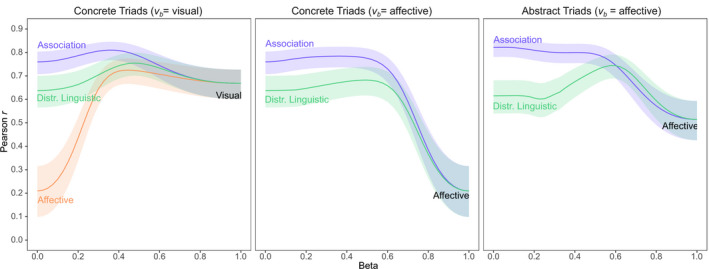Fig. 2.

The effect of adding visual or affective experiential information to predict triadic preferences for concrete (first and second panels) and abstract (third panel) word pairs. Each panel shows the unimodal distributional linguistic and word association correlations on the left side of the x‐axis and the unimodal experiential (affective or visual features) correlations on the right side. Intermediate values on the x‐axis indicate multimodal models. In the first panel, visual information is added: Larger β values correspond to models that weight visual feature information more. In the second and third panels, affective information is added: Larger β values correspond to models that weight affective information more. Peak performance for all models usually occurs when about half of the information is experiential.
